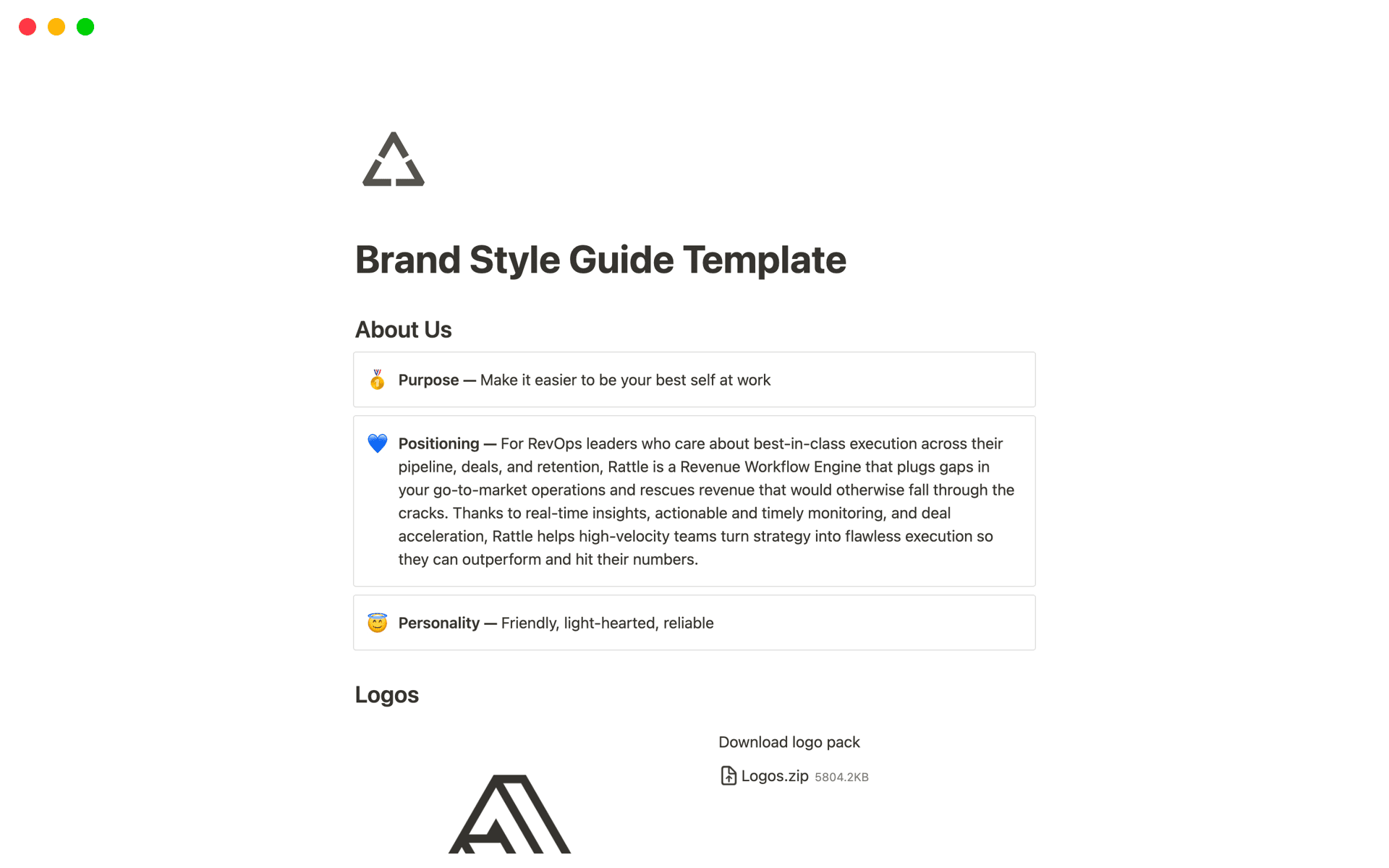Brand guidelines serve as a map for product designers, guiding the visual and perceptual elements of product creation. Properly applied, they ensure consistency across every customer touchpoint, reinforcing brand identity. A Brand Guidelines Notion template simplifies this process by offering a structured approach to organizing and applying these crucial elements easily and effectively.
Before embarking on crafting your own Brand Guidelines template, consider exploring the included examples to streamline the process.
What Should Brand Guidelines Templates Include?
Choosing the right Brand Guidelines template is crucial for maintaining consistency across your product design. Here's what to look for in a top-notch template:
Logo Specifications: Details the size, color, and spacing of the logo to ensure it is used consistently across various platforms.
Color Palette: Defines the primary and secondary colors with specific color codes to maintain visual harmony in all designs.
Typography: Outlines which fonts to use, including acceptable sizes and styles for headings, subheadings, and body text.
Imagery Style: Describes the style of photography, iconography, and illustrations that align with the brand's identity.
Selecting a comprehensive template can significantly streamline your design process and reinforce your brand's identity.
What Should Brand Guidelines Templates Avoid?
Choosing the right Brand Guidelines template is crucial for maintaining consistency in your brand's identity. However, not all templates are created equal. Here are three key components to steer clear of when selecting your template:
Overly Complex Layouts: Templates with complicated designs can confuse rather than clarify. Opt for simplicity to ensure that your brand's standards are easy to understand and implement.
Generic Color Schemes: Avoid templates that do not allow customization of color schemes. Your brand's colors are a core part of its identity and should be prominently and accurately displayed.
Fixed Font Choices: Steer clear of templates that limit your ability to modify font settings. Flexibility in typography is essential for aligning the guidelines with your brand’s unique style.
Selecting a template that avoids these pitfalls will help ensure that your brand is represented consistently and professionally across all mediums.













